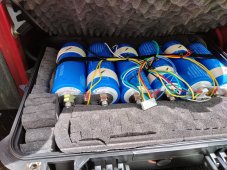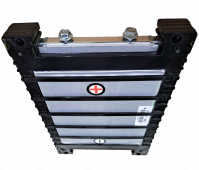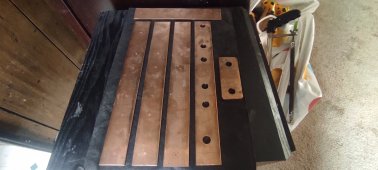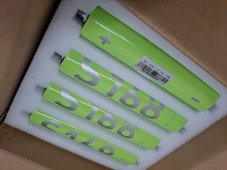That's exactly what I'm thinking. To get power from the battery pack to the airplane I typically build a jumper with #2 welding cable and a standard GPU plug (picture attached). I've built battery packs from lead acid in the past, and am currently using a commercial 8s LiFePo battery to run the radios on the ground for training and maintenance.Cool project!
To get 800a output you must have some massive battery cables running to the starter. How frequent are crank/no start or cranking a second time in attempt to start? IE how often does this get put to use more than once per day?
Normally, I'd be yelling and screaming about needing a BMS. But, your engine costs much more than any BMS.
I'd run the charge and the 70a discharge through the BMS and have some visible indicator of "ok to start" and a visible SOC to know if you've got enough juice to try again.

Most of the time there is one start per any given day day, and the amp draw drops to almost nothing once fuel is introduced and the engine starts to turn itself (about 15 seconds). Once a month or so, we'll do a "desalinization wash" which involves running the starter for 30 seconds while spraying water into the engine to rinse salt deposits (caused by landings next to salt water). Each time we wash it will be twice in about five minutes. That would be the most severe use of the battery.
For radio maintenance/training/updating databases I'll plug in and draw probably 15-20 amps at 28 volts for up to an hour.
Once a year or so, we'll test systems like the flaps (electric motor) and landing gear (electric/hydraulic power pack) but these are trivial compared to the starter.
Eventually, I'd like to add inverter(s) to run incidental AC loads in the hangar in the case of a power outage, or needing power on the airport away from the hangar.








